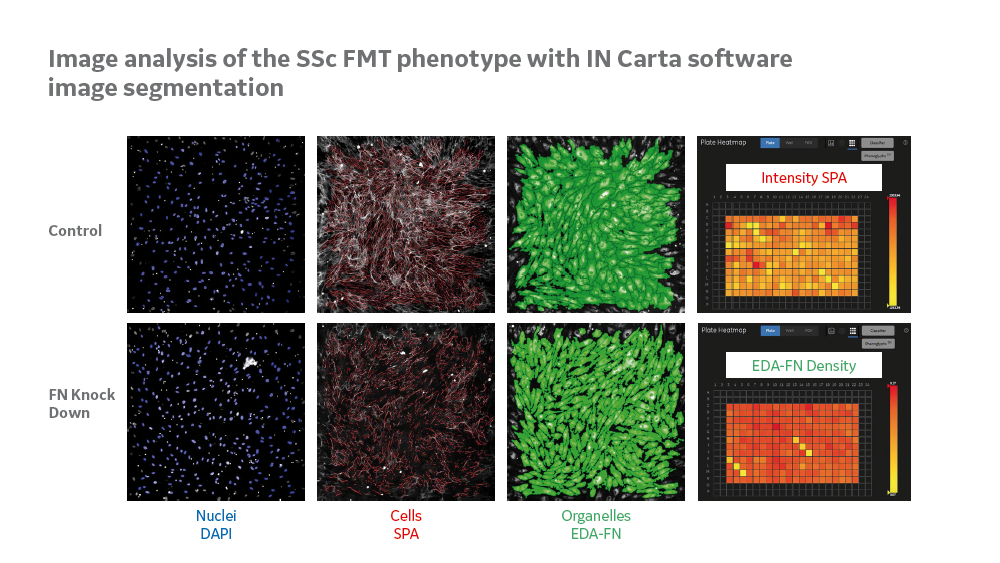
Biotech company Galapagos improves high-content screening (HCS) in scleroderma with IN Carta Phenoglyphs image analysis
Galapagos's mission is to develop first-in-class medicines based on the discovery of novel targets. Using human primary healthy andpatient cells, the company discovers which proteins play a key role in diseases such as rheumatoid arthritis, inflammatory bowel disease, and fibrosis.
One of these diseases, systemic sclerosis (SSc), also known as scleroderma, is an autoimmune connective tissue disease characterized by early vascular abnormalities and subsequent fibroblast activation which leads to fibrosis. Fibroblast-to-myofibroblast transition (FMT), a biological process in which fibroblasts differentiate into myofibroblasts and secrete excessive quantities of extracellular matrix (ECM) proteins, has been reported to play an important role in late-stage SSc. Our discovery research has relied for years on high-content imaging with GE’s IN Cell Analyzer 6000 platform and the accompanying Investigatoranalysis software. With the advent of GE’s IN Carta software, moresophisticated target measurements have become available.
In combination with the Phenoglyphs machine learning tools, we can now classify our samples for robust hit calling. With these tools, we have developed a high-throughput high-content imaging assay to measure ECM proteins in patient-derived fibroblasts. We have performed a pilotscreen to assess the quality of our assay in which we will screen a libraryof siRNAs to identify novel drug targets.


 BIOCOM / aminul788 - Adobe Stock
BIOCOM / aminul788 - Adobe Stock Bayer Co.Lab
Bayer Co.Lab